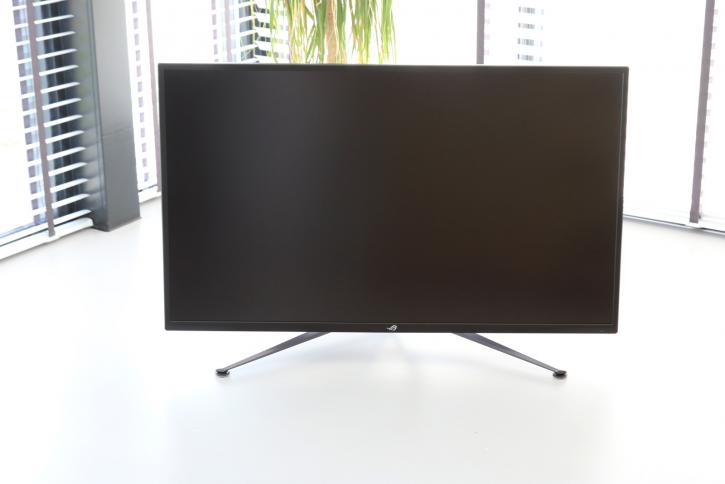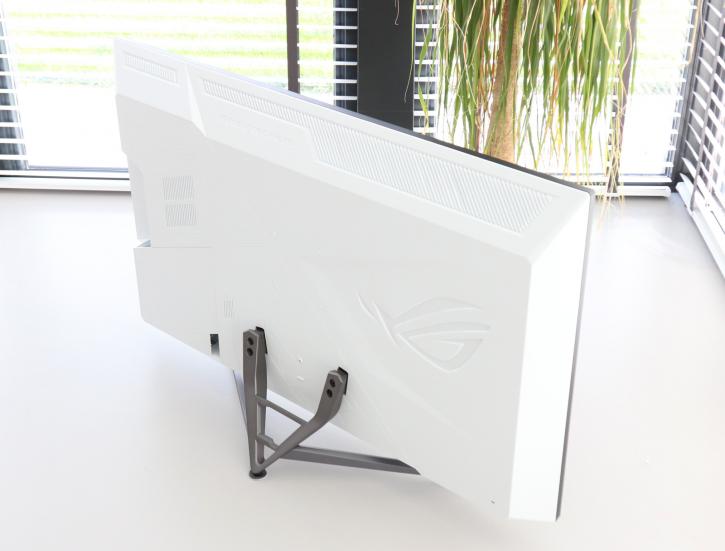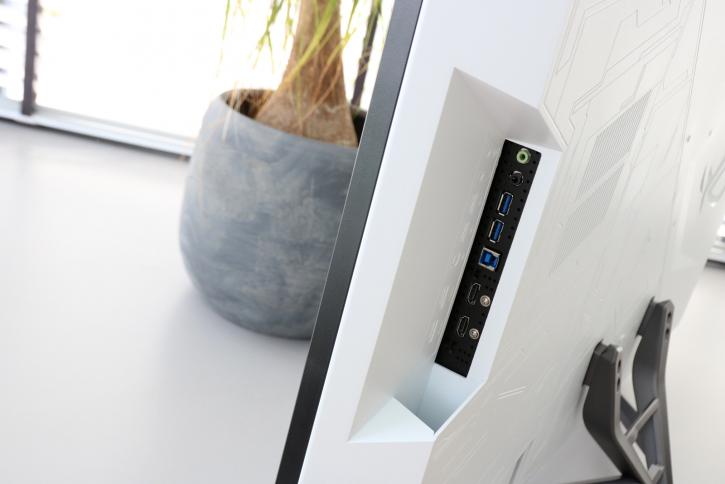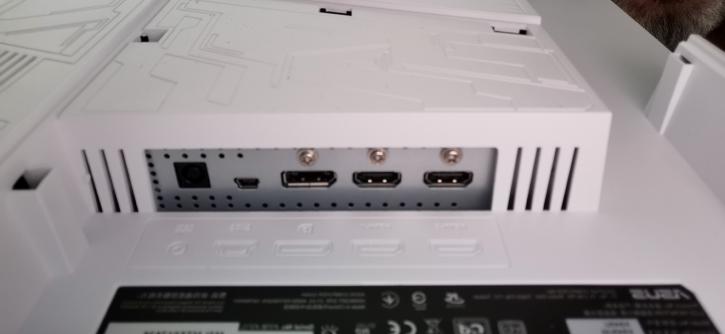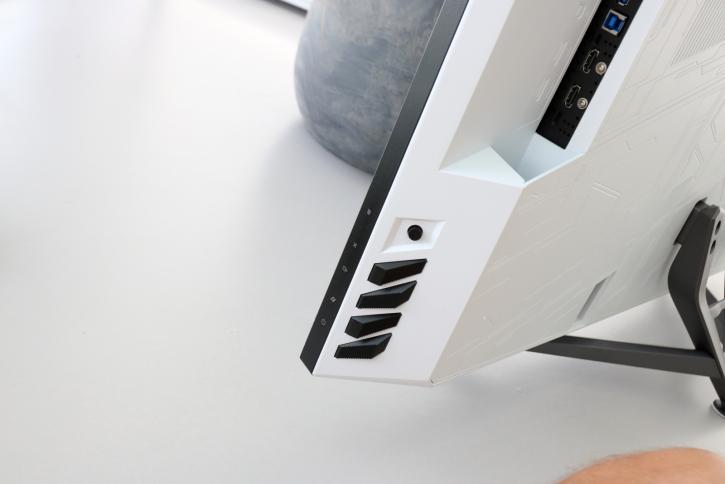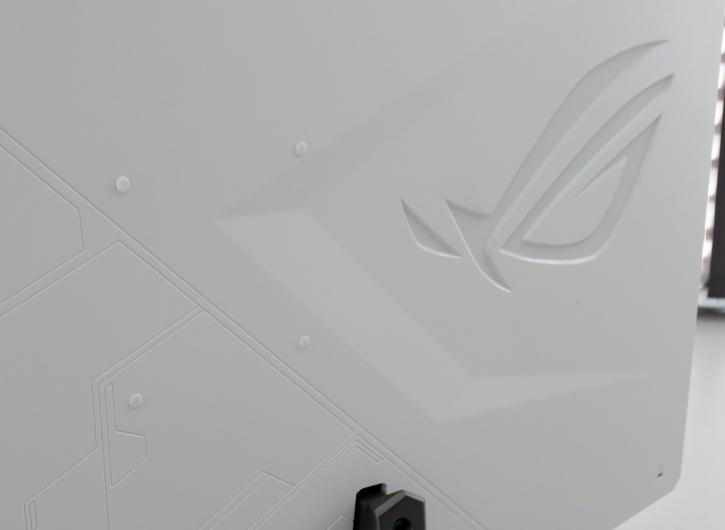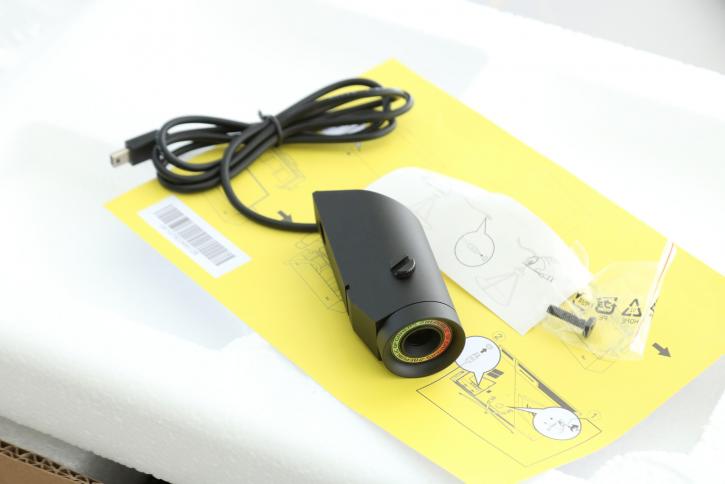Photo overview
Photo overview
The gaming display has a pair of 10W speakers. They're compelling and punchy, with strong bass and overall good build quality throughout the spectrum of speakers. They can't quite compete with high-quality television speakers or a soundbar, but they're not far behind in terms of sound quality. They're far superior to any other monitor speakers I've tried, and they're certainly good enough for gaming.
In front is all black. The rear of the ASUS ROG Strix XG43UQ displays the monitor's unique stand, which is entirely white and adorned with the classic futuristic engravings that have become synonymous with ASUS monitors in recent years. The screen is matte black, there is very little reflection, albeit the photo does show a tiny bit due to our all-white lit testing grounds.
Asus doesn't provide the exact number of lit zones, which is likely because this is an edge-lit monitor and the number can't be particularly impressive—somewhere in the range of eight to sixteen we think at the very most. In other words, it does not have a full gamut of backlighting, and the dimming feature is ultimately rather ineffective in contrast of newer technologies. In order to mitigate this, the VA panel features an extremely high intrinsic contrast ratio of 4,000:1. As far as non-authentic HDR monitors are concerned, the dynamic range is actually rather good. However, finding an HDR1000 monitor that does not support full-array dimming is a significant setback.
A particularly effective way to make the silhouette of a generously thick monitor elegant and, consequently, heavy, thanks in part to the stand, which weighs 1.1 kg out of a total weight of 15.3 kg. Also remarkable is the efficient internal dissipation that is achieved by the use of the big top grilles and the anti-glare surface, which is of significantly greater quality than that seen on other screens of this type.
A portion of the connection is of the lateral variety. A convenient location on the right side of the console houses the HDMI 2.1 ports, USB ports, and audio inputs. The ports are in a recess that is simple to access for consoles, systems, and peripherals.
At the rear a plastic panel, which also serves to conceal the power supply as well as the AURA Sync connector, which is required in order to operate an optional RGB projector, may be removed to reveal the remaining components. In addition to USB 3.0 and HDMI 2.1 and 2.0 ports, the Strix XG43UQ has an audio line-in connection as well as an earphone jack for listening to music.
On the right, we have the controls, which are comprised of four specialized keys that are all black in order to contrast with the white plastic of the background, as well as the conventional stick that allows you to navigate through the options available on ASUS's monitor menu.
You must, of course, be a fan of the RoG aesthetic; this is not for everyone, and some people might find it distasteful. Myself, I like it and the white backside is just a really nice toutch.
By the way; the monitor lacks an integrated power supply, which means you'll need to conceal the very bulky power adaptor beneath your desk.
And if you're a true fan, you can mount a ROG projected logo unit ate the lower rear side of the screen. Asus also includes a remote control that adjusts the volume and settings.

